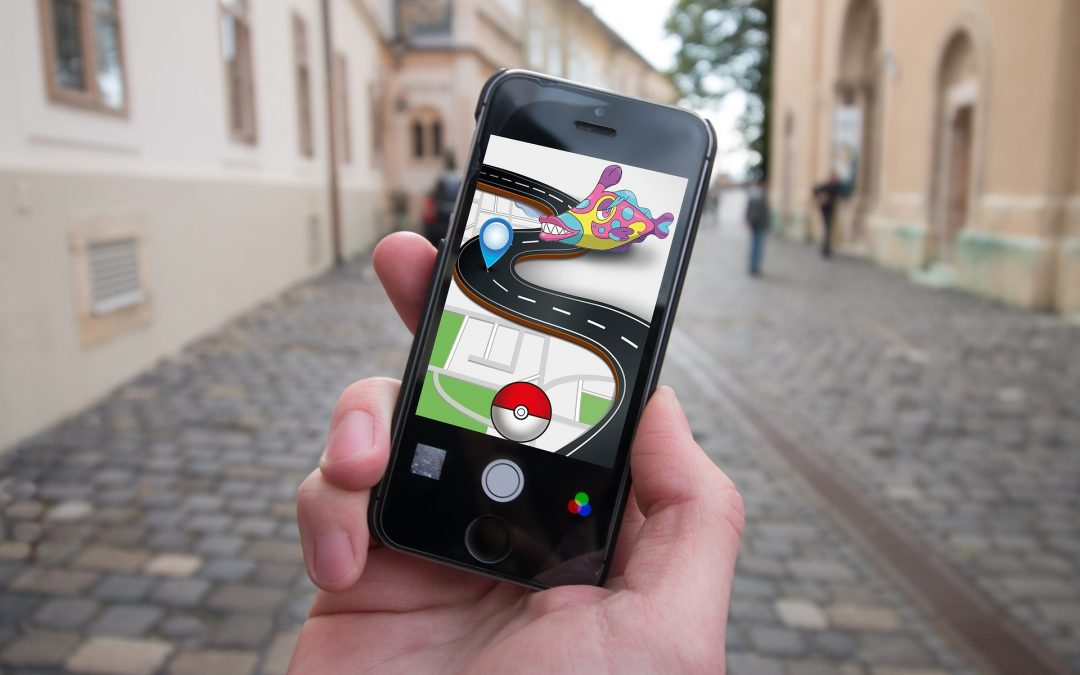We live in a world populated by virtual monsters and millions of people intent on catching them all. With the unprecedented success of Pokemon GO last summer, the tech world is receiving a loud and clear signal that consumers are ready to embrace augmented reality (AR). Monster hunting is only the beginning.
Meanwhile, virtual reality (VR) is also promising interesting new forms of content, especially for media consumption. Last August, Netflix unveiled its first foray into the medium with a VR promo for its new original show Stranger Things. And while the spooky atmospheric show is the perfect backdrop to immerse viewers in the 3D world of its characters, it excludes a huge percentage of the population by requiring a 360 VR viewer like Google Cardboard to participate. This is the crux of why VR has been slow to gain the kind of momentum that AR achieved in one fell swoop with Pokemon GO. Whereas virtual reality requires additional equipment that can be clunky or expensive, augmented reality requires nothing more than the technology we already have in our pockets. It’s the perfect medium for the smartphone age.
Virtual reality transports viewers into an entirely fictional world. Augmented reality seeks to blend elements of the real world with a virtual one, creating a space with a seemingly limitless amount of variants to redefine not only how we play, but also how we work and live. And when we’re living in an age in which a giant traffic transcending bus is becoming a reality, it’s arguably more interesting to blend real world elements with virtual ones. Building more creativity into our daily tools will have a domino effect in terms of technological and scientific breakthroughs. Imagine what Einstein could have done with augmented reality at his disposal.
With startups like Magic Leap raising a staggering $1.3BN in funding for mixed reality technology that has been largely been kept under wraps, it’s clear that the future of tech resides in these mixed media spaces. Instead of passively consuming information, as we mostly do today on the internet, mixed reality allows us to have compelling immersive experiences. Magic Leap is creating a new interface using a lightfield chip to utilize your brain as a computer display, and among their teaser videos is a new way to start your day that blends your morning routine with a digital overlay. In a talk with Fortune, Magic Leap CEO Rony Abovitz calls Pokemon GO a “gateway to a whole new future that we’re building.”
Magic Leap recently partnered with Lucasfilm to create immersive Star Wars experiences, so you can bring R2-D2 and C-3PO directly into your home. Clearly the space is ripe for entertainment partnerships, but like the tablet moved from a gaming to a productivity tool, Magic Leap’s founders envision mixed reality (MR) technology transforming how we work just as much as how we play.
While the distinction between augmented reality and mixed reality is still being defined, all of our daily smartphone uses are ripe for a blended reality makeover of some kind. And it’s strangely fitting that Pokemon—a cult favorite game from the nineties—has resurfaced to lead the way into the AR future. After all, augmented reality tech has been around since the late 1960s, when the first head-mounted augmented reality system was created by Ivan Sutherland to show computer generated images. By the early 90s, the Air Force was using AR to allow the military to remotely control machinery. By 1998, the 1st & Ten technology changed the way we view football. From there, AR made its way more fully into the entertainment industry in a variety of media forms. It was only a matter of time before R2-D2 landed in your living room.
As we race into a future in which hunting virtual monsters is the new norm, we can expect to see AR technology redefining a number of industries beyond entertainment. Aviation companies Elbitt and ATR have recently developed AR headsets that they believe will help pilots land planes in poor visibility conditions that would previously require rerouting. With 3D visualizations of cockpit data to enhance pilot capabilities, the companies hope to receive certification by next year. From aviation to auto tech, augmented and mixed reality have the potential to boost safety by analyzing more factors than a human can process at once.
Meanwhile, Trillenium is among a crop of VR and AR companies looking to transform the retail shopping experience to combine the best of real-world and online shopping. Imagine being able to physically browse aisles without having to drive to the mall, park, and battle crowds. Virtual stores seem like the inevitable outcome of retail plus online shopping with a dose of mixed reality thrown in.
In the workplace, AR and mixed reality could be huge productivity tools, particularly in areas like training and product creation. A software developer could step into her world while it’s being built, rather than be removed by a monitor. Medical applications are also promising, from simulated controlled environments for PTSD patients to aiding rehabilitation for disabled patients.
While there are so many interesting applications for augmented and mixed reality on the horizon, what unites this technology is its promise of immersing us more fully in the world around us, rather than transporting us to a fantasy land. In an age where technology has often been criticized as an isolating and dehumanizing force, it’s exciting to see how augmented reality could foster real-world connections. If you need proof, just go play Pokemon GO in your nearest public park.
